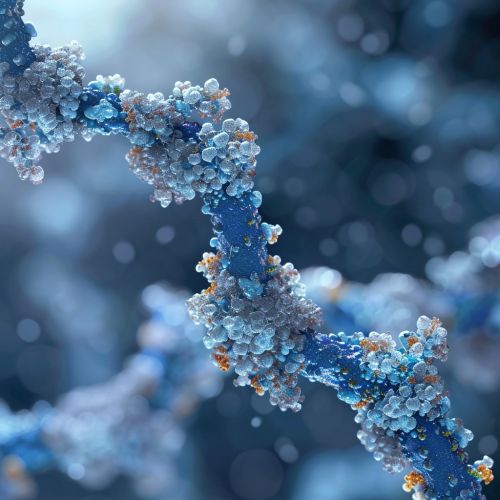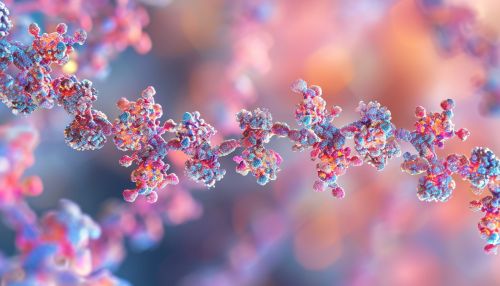Carbamoyl phosphate synthetase
Overview
Carbamoyl phosphate synthetase (CPS) is a enzymatic protein that plays a crucial role in the metabolic pathways of urea and pyrimidine synthesis. This enzyme catalyzes the production of carbamoyl phosphate from ammonia and bicarbonate, using ATP as an energy source. There are two distinct types of this enzyme, CPS I and CPS II, each with different roles and locations within the cell.


Structure
The structure of carbamoyl phosphate synthetase is complex and highly specialized. The enzyme is a large, multi-domain protein that consists of several distinct regions, each with a specific function. The enzyme's active site, where the catalytic reaction takes place, is located in the carboxy-terminal domain. This domain is connected to the other domains by a long, flexible linker region, allowing for significant conformational changes during the catalytic cycle.
Function
The primary function of carbamoyl phosphate synthetase is to catalyze the synthesis of carbamoyl phosphate, a critical intermediate in the metabolic pathways of urea and pyrimidine synthesis. In the urea cycle, CPS I converts ammonia, a toxic byproduct of protein metabolism, into carbamoyl phosphate, which is then used to produce urea for excretion from the body. In pyrimidine synthesis, CPS II uses glutamine as a nitrogen source to produce carbamoyl phosphate, which is then used to synthesize the pyrimidine nucleotides cytosine (C) and thymine (T).
Regulation
Carbamoyl phosphate synthetase activity is tightly regulated to ensure proper metabolic balance within the cell. CPS I is primarily regulated by the molecule N-acetylglutamate (NAG), which acts as an essential allosteric activator of the enzyme. In contrast, CPS II is regulated by a variety of factors, including the levels of ATP and UTP, the end products of pyrimidine synthesis.
Clinical Significance
Mutations in the genes encoding carbamoyl phosphate synthetase can lead to a variety of metabolic disorders. Deficiencies in CPS I can result in hyperammonemia, a condition characterized by elevated levels of ammonia in the blood. This can lead to neurological symptoms such as confusion, lethargy, and in severe cases, coma or death. On the other hand, deficiencies in CPS II can lead to orotic aciduria, a condition characterized by an excess of orotic acid in the urine. This can lead to growth retardation, developmental delay, and other health problems.
